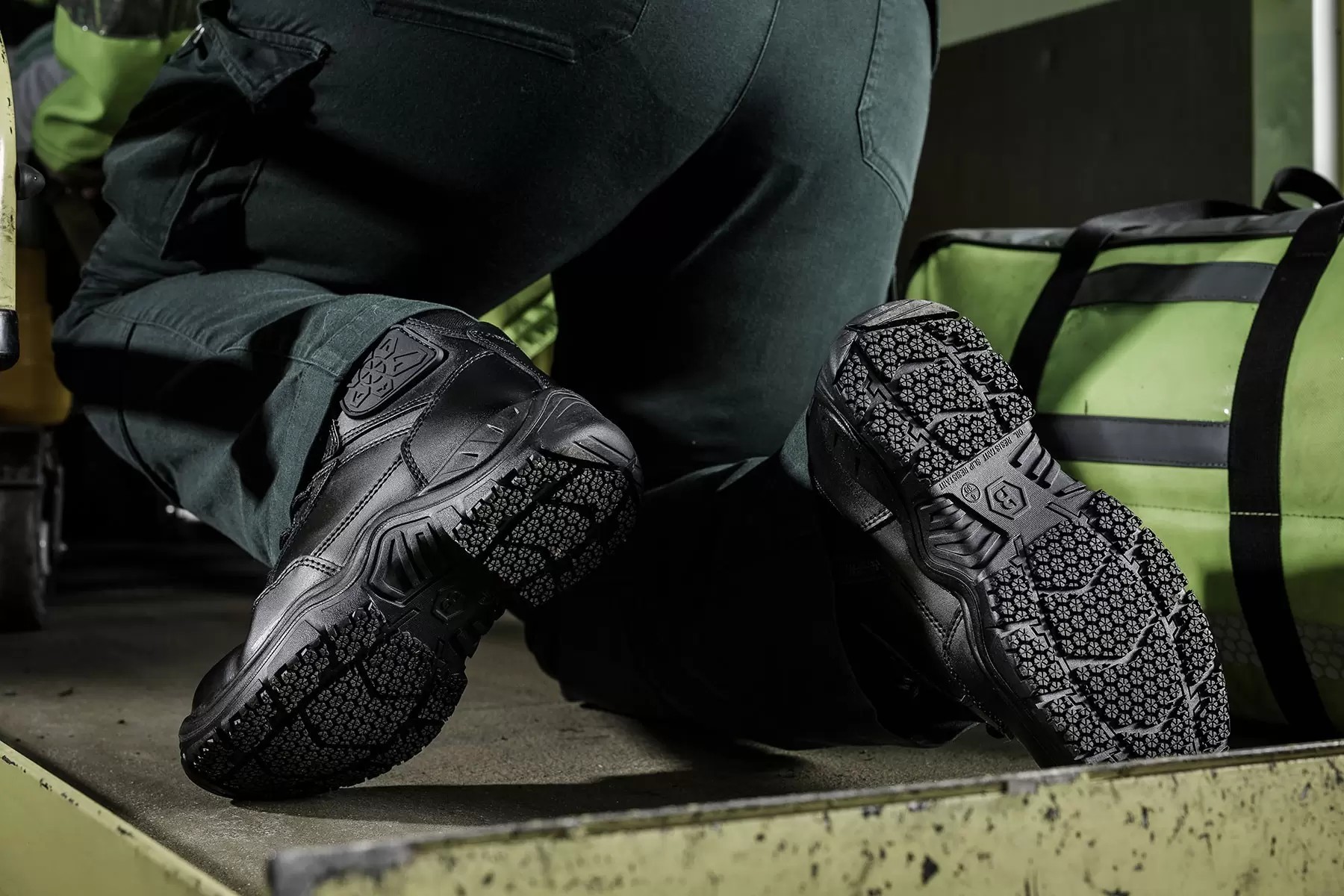ALL Gloves
| 05 April 2023
We answer some of those questions you may have been faced with when having to choose safety footwear.
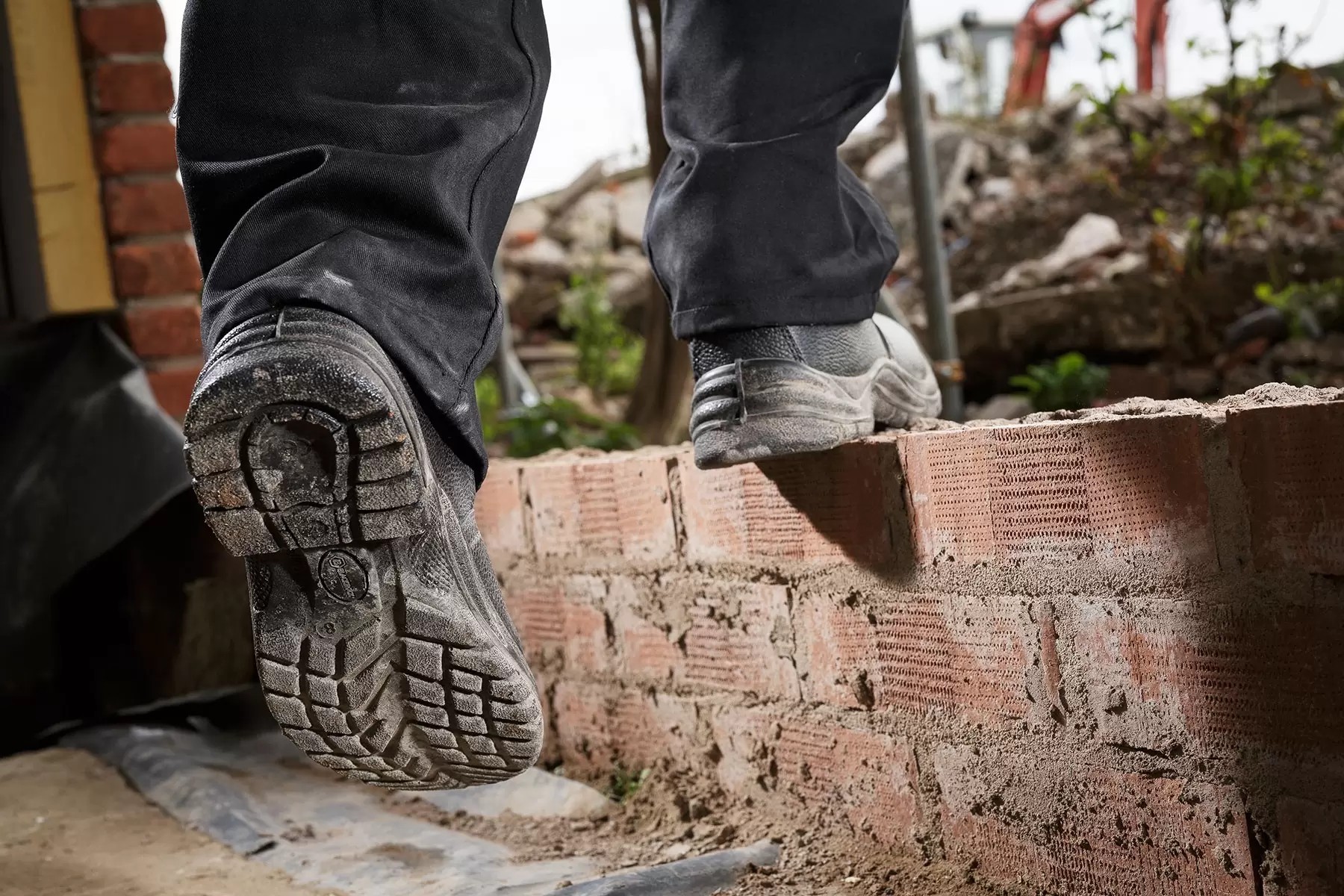
We all like to know we’re making the right choice when it comes to purchasing any form of footwear, but for anyone whose job relies on having their feet safe and always protected, functionality is an essential element.
While any footwear certified in accordance with safety standards is obviously your first jumping off point with safety footwear, there’s always other requirements and preferences that lead to the decision-making process.
Below are some questions you may - or may not - have thought about when faced with having to choose safety footwear.
Once the domain of offshore oil rig workers, regardless of what you may have heard, rigger boots haven’t been banned by the HSE. There’s no concrete evidence available that rigger boots have be directly at fault in any work-based incidents.
However, some construction companies have deemed that due to the loose-fitting style - ironically the USP which offers a lifeline to oil riggers surrounded by nothing but ocean - the boots could run the risk of causing foot and ankle injury.
The popularity of rigger boots as a general-purpose work boot is largely down to two obvious benefits – comfort and cost. The very nature of the style means they’re easy to slip-on and pull-off, with no laces to trip over. The boots’ faux fur lining is incredibly enticing to workers, particularly on those cold, gloomy months where the prospect of feet being kept warm and cosy is undeniably a much-needed morale boost.
Affordability-wise, your average pair of riggers won’t break the bank and offers an appealing alternative for those who have been offered the kind of shoe allowance from their employer which doesn’t stretch to some of the more expensive lace-up boots on the market.
Additionally, alongside steel toe caps, Blackrock riggers offer the additional security of a protective midsole, making this form of safety footwear a functional and aesthetic choice for many.
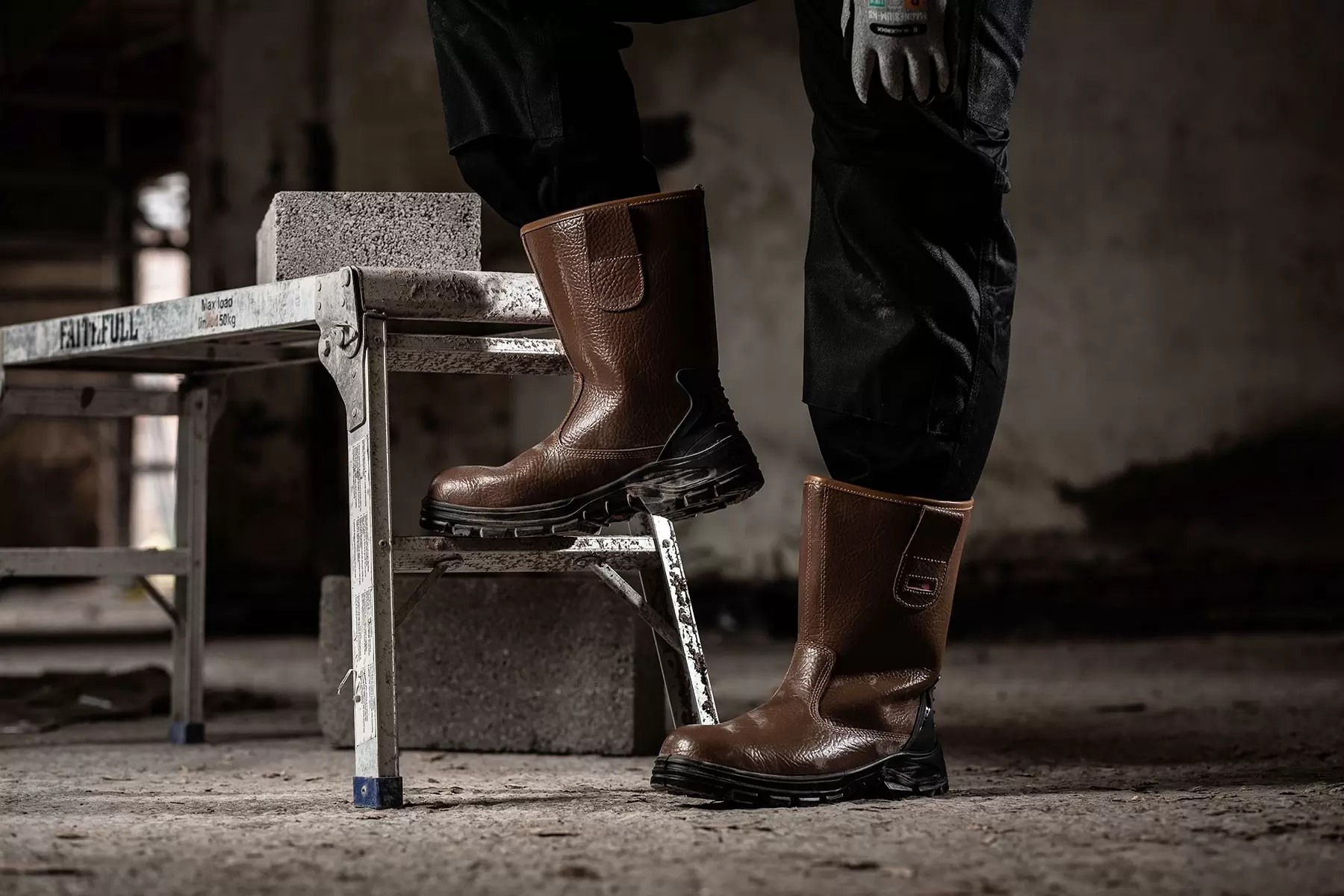
The reality is that safety and comfort should go hand-in-hand with workwear. The nature of this type of footwear means the wearer will be largely active throughout the life of the product. This means that comfort is an integral part of the design process.
Poorly fitting footwear isn’t just uncomfortable. It can cause a whole range of foot issues such as blisters, toenail damages and plantar fasciitis, the likes of which may ultimately impact upon the wearer ability to do their job properly.
You’ll find a large variety of fully waterproof products in our collection, which are applicable for all industries.
For those roles which require prolonged standing and walking - such as a warehouse operative – we have safety shoes which include EaziStep padded and breathable insoles which offer that much-needed comfort.
But like any other new footwear, there’s the usual means of ensuring any initial discomfort is avoided. It won’t harm you to put a little time before your first day on the job in conditioning your shoes to bend and stretch with you as you walk.
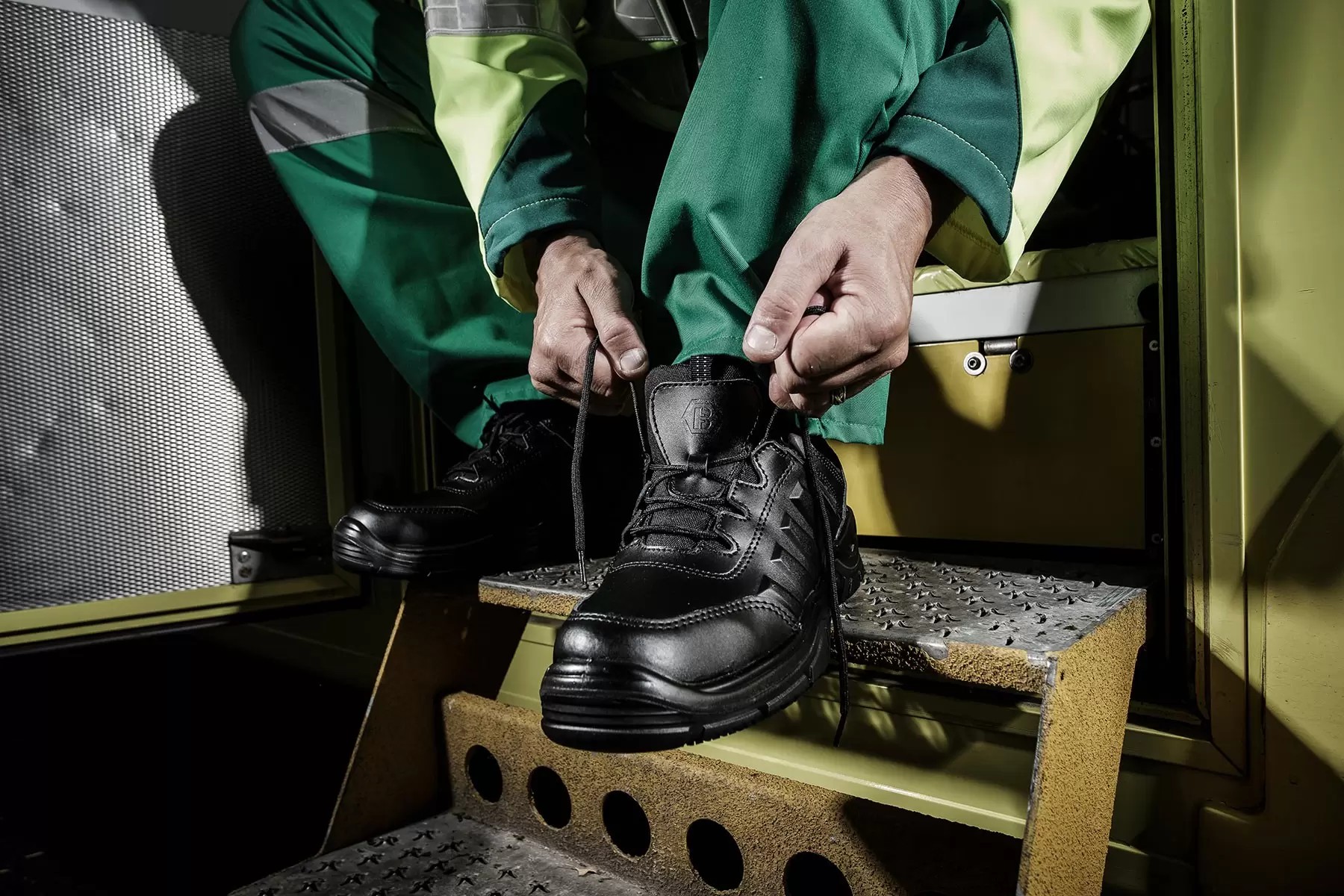
According to the 2021/22 HSE Workplace Health and Safety Report, slips, trips or falls accounted for 30% of all workplace injuries – a slight rise from the previous year’s reporting. This form of non-fatal injury is by some distance the most common in the workplace, which only emphasises the importance that the PPE offered in this area is up to the demands of lessening such a risk.
The HSE has developed a GRIP rating scheme with the purpose of allowing footwear users to identify suitable slip resistant footwear as a control measure to reduce their risk of slipping accidents.
This has been at the forefront of Blackrock’s footwear design during our recent product development process, hence why it was particularly gratifying for us to achieve a 4-star GRIP rating.
Our HexaGrip sole is available in the occupational footwear range we sell (more on this below) and features hundreds of small hexagons. It’s a shape which is often considered strong and efficient as it can distribute stress evenly across its structure and presents a large surface area which is vital for effective grip, thus reducing the chances of slipping.
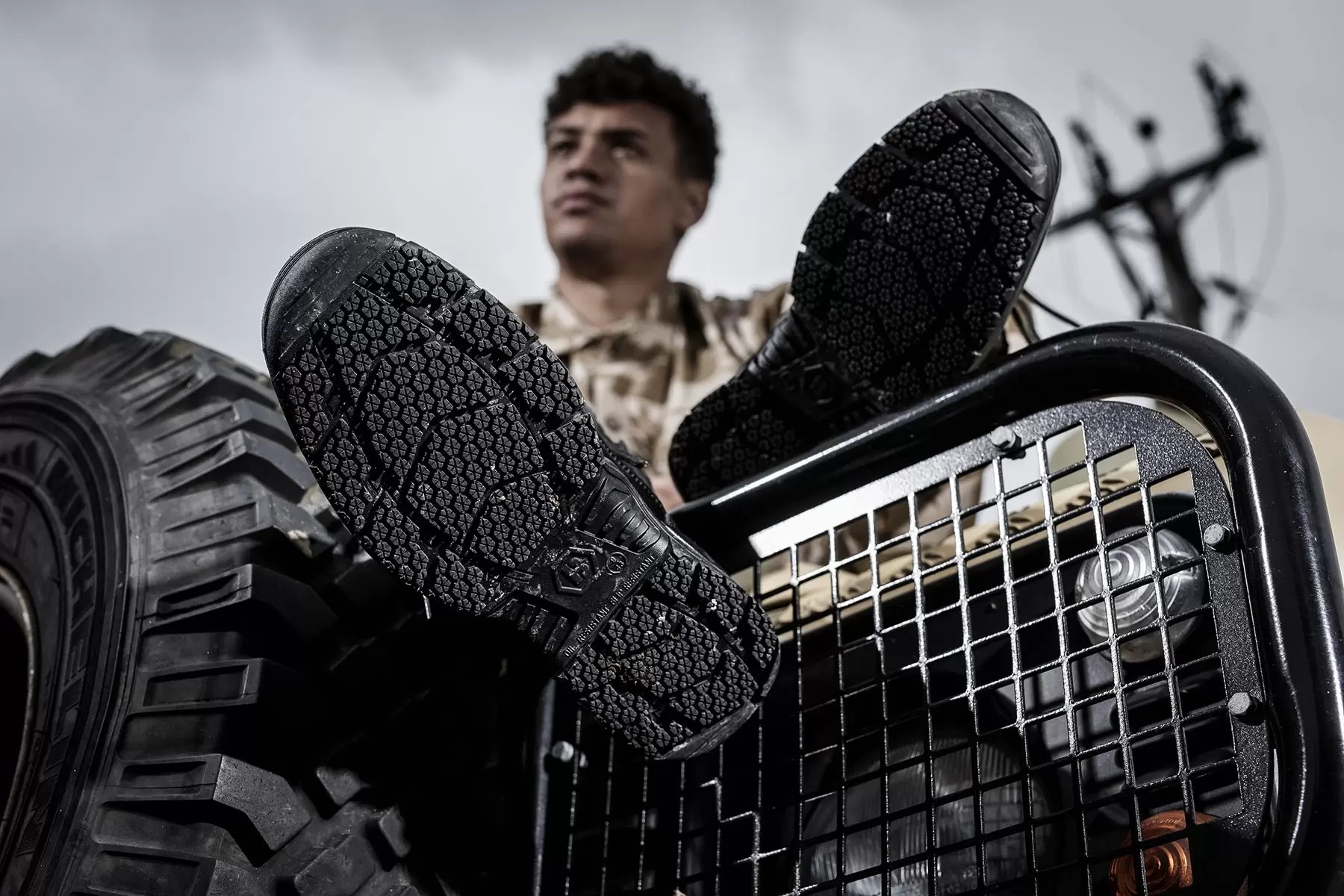
First things first, it’s prudent to note that occupational footwear adheres to the requirements in the EN20347 standard, rather than the EN20345 safety standard.
Although the difference between both standards is largely down to the exclusion of a steel toe cap in occupational footwear, there’s other benefits to Blackrock’s occupational footwear which could ultimately be instrumental in your decision-making. One of these may be particularly appealing to those who work in the emergency services.
Bloodborne pathogens are microorganisms in human blood that can cause disease in humans. These are often transmitted by pre-used needles or other sharps puncturing the skin and any other accidental punctures, cuts or abrasions.
This kind of occupational footwear is a huge benefit for hospital staff and paramedics who are most likely to encounter blood spills at work. Whilst the probability of other emergency services encountering blood spills is lower, the repercussions of infection can obviously be huge.
What’s more, our full occupational footwear range is bloodborne pathogen resistant so why wouldn’t you protect yourself against this potential hazard?
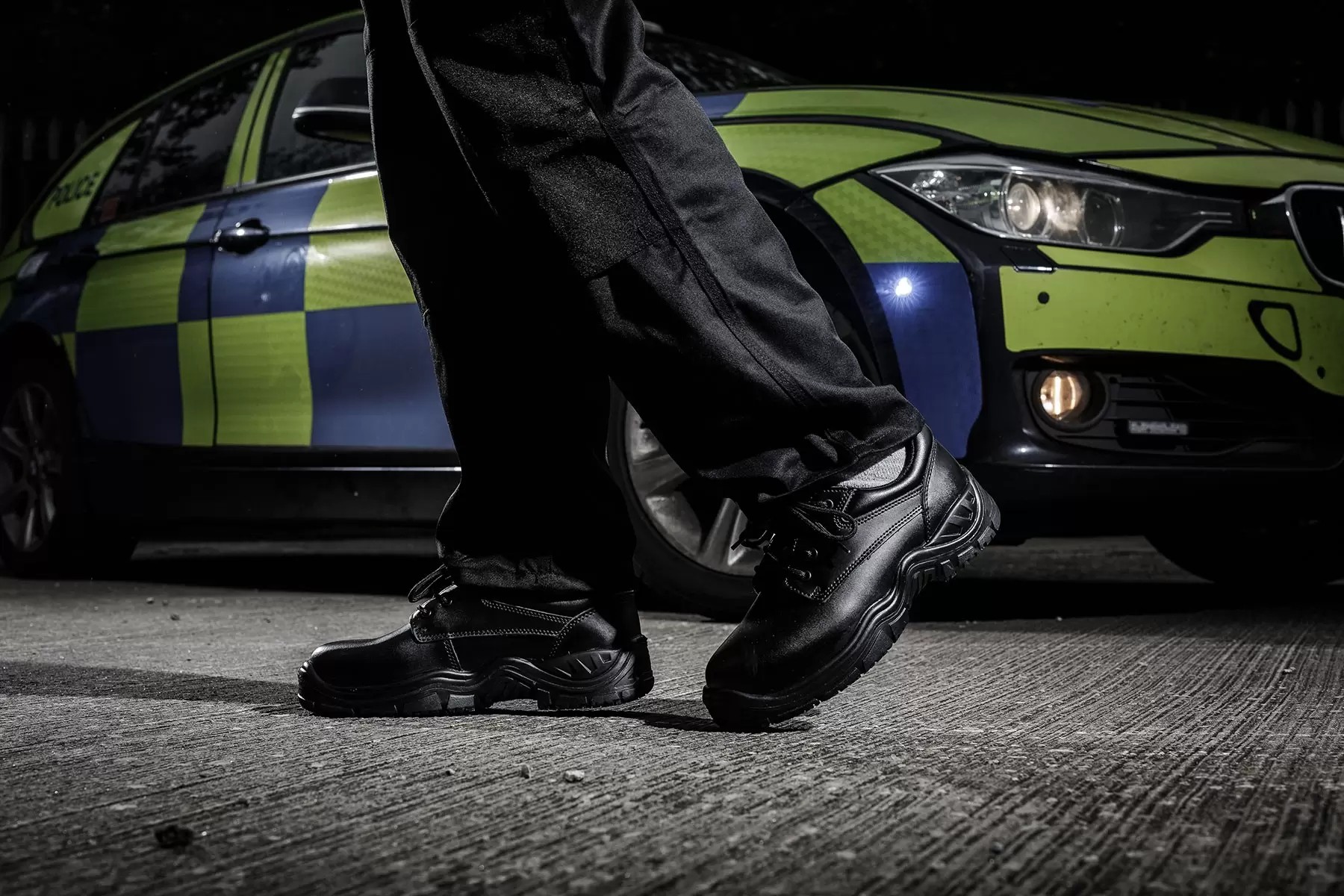
Occupational footwear is associated largely with the police force, where protection and performance are two of the major requirements in the ability to maintain public safety. Blackrock's own range features a metal-free, penetration-resistant midsole, which comes as standard in all seven styles – a huge selling point for those in the force.
However, the demands of a paramedic are such that they certainly require extra stability when it comes to that the fast-paced, high-pressured daily challenges of working in that environment.
But it’s not just paramedics who are constantly using on and off their feet - delivery drivers, postal service and those in the transport sector need that security and sturdiness.
The performance gained by wearing occupational footwear in those industries outside of law enforcement not only ensures that individuals can perform their job to the best of their ability, but the protective characteristics of occupational footwear can also offer additional peace of mind for wearers.
